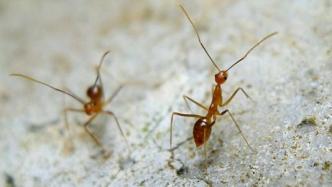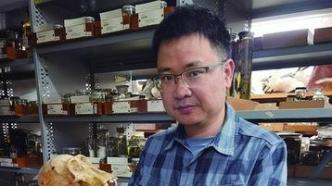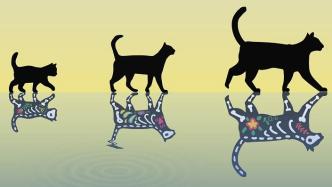
Crazy yellow ants get their name from their frenzied behavior when disturbed. There's another reason for their madness, according to a study by German researchers -- male yellow mad ants are a hybrid of two rival cell lineages. Other organisms sometimes form such chimeras, but it's usually a developmental accident, and the yellow mad ant is the first animal known to have this trait as a fundamental feature of life. Related research was published in Science on April 6.
The yellow mad ant is a notoriously invasive species found mainly in Southeast Asia and Oceania, where it poses a threat to invertebrates and even some small mammals. On Australia's Christmas Island, south of Java, yellow mad ants kill a large number of red crabs endemic to the area.
The first clues to the mad ant's weird biology came from a study of genetic markers scattered throughout its genome. Male yellow mad ants appear to carry two versions of the genetic marker. This is a puzzling feature because in most ants, males develop from unfertilized eggs and therefore have only one copy of the genome.
Some ant species occasionally have "diploid" males, that is, two copies of the genome, but these males are usually sterile. Hugo Darras, an evolutionary biologist at the University of Mainz in Germany, points out that all the males of the yellow mad ants are diploid, which is really strange and seems completely unreasonable.
To determine what was going on, Darras' team analyzed individual cells of yellow mad ants collected from Southeast Asia. They found that each male cell contained only one copy of the ant's genome, but that this genome varied between cells. Some cells have the lineage that exists in the queen, defined by the "R" chromosome, while other cells carry a single copy of a different genome, defined by the "W" chromosome.
Queens have two copies of the W genome in their cells, while sterile female workers have one copy of each lineage in each cell. Darras' team found that male chimerism plays a crucial role in the ants' caste system.
All queen egg cells carry one copy of the R genome. If this egg is fertilized by a sperm cell with the R genome, a queen is produced. However, if the egg is fertilized by W sperm, there are two possible outcomes: if the two genome-containing nuclei fuse, a diploid worker ant will form; if the nuclei do not fuse, the egg will develop into a chimeric male, Some cells carry the R gene and others carry the W gene.
"As far as we know, this is an unparalleled biological phenomenon," said Daniel Kronauer, a biologist at The Rockefeller University in the United States. The chimerism in yellow mad ants may help improve the species' ability to escape adverse impacts on the ecosystem. Ant queens have specialized organs for storing sperm from multiple males. This means that a single queen storing R and W sperm separately can establish a new colony.
Lori Lach, an ecologist at James Cook University in Australia, wondered whether researchers could use their strange biology to stop ant populations from expanding.
Related paper information:
https://doi.org/10.1126/science.adf0419
(Originally titled "For the first time in biology! Scientists have discovered the first animal with two sets of DNA")


